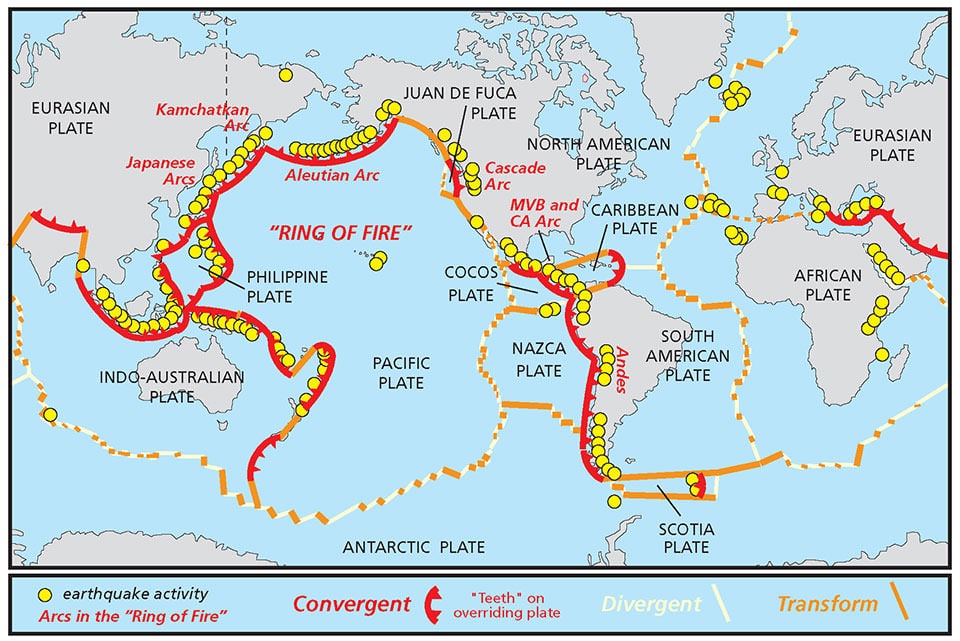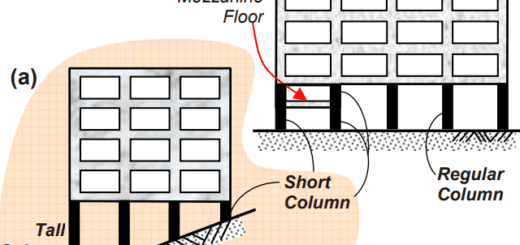Intraplate Earthquakes | Another Type of EQ
Intraplate earthquakes are a particularly destructive type of seismic activity, which can cause considerable damage to buildings and infrastructure. They can also be difficult to predict compared to other kinds of seismic disturbances. As civil engineers, it is important to consider the challenges presented by intraplate earthquakes in order to ensure that the structures we create are resilient when it comes to this kind of seismic activity. In this blog, we will explore the characteristics of intraplate earthquakes and the best practices civil engineers can employ to mitigate their effects.
What is an earthquake
Earthquakes occur around the world every day. Most of them are harmless, but some can be very destructive. Earthquakes have been recorded for thousands of years. An earthquake is a sudden, rapid shaking of the ground caused by underground rock movement. These movements are called seismic waves and they travel in all directions from the focus or point of origin beneath the Earth’s surface (the earthquake epicenter). Earthquakes occur when stresses within the earth’s crust force rocks to move past each other suddenly and without warning. As these rocks grind against each other, energy builds up until it is suddenly released as seismic waves when one large rock shifts against another. The magnitude of an earthquake is measured on a scale from 1 to 10 with 7 being immense destruction and 10 indicating total destruction. Magnitude does not indicate how deep an earthquake occurs or how large an area it affects; it simply measures how much energy was released at its exact location in space and time.
Mainly, there are two types of earthquakes
Intraplate earthquake , which occurs at the boundaries of tectonic plates but not on a plate boundary itself. These often result from stresses caused by the oceanic lithosphere sinking into the underlying asthenosphere .
Tectonic earthquake . This happens at convergent boundaries between two or more tectonic plates . The plates may collide or one plate may pass over another release the energy.
What are intraplate earthquakes
An intraplate earthquake is a type of seismic activity that occurs within the interior of a tectonic plate, rather than at its edge as an interplate earthquake.
The majority of large earthquakes are intraplate earthquakes. Intraplate earthquakes occur in association with faults that are not plate boundaries and involve the deformation and flow of lithospheric plates in response to forces such as mantle convection currents, ridge push, slab pull, subduction thrust loading, accretionary wedge loading, or volcanic activity. Intraplate areas include oceanic ridges and deep ocean basins far from continents. They can also be found inland in regions far from active plate boundaries.
How does an intraplate earthquakes occur
An intraplate earthquake is an earthquake that occurs within the interior of a tectonic plate, as opposed to at its edges. Tectonic plates move very slowly (a few centimeters per year), they can build up tremendous stress over time that is suddenly released during an earthquake. Intraplate earthquakes differ from other types in both origin and behavior. They occur several hundred kilometers inside a tectonic plate rather than near plate boundaries. They also do not seem to follow plate boundaries and often move along unusual paths, suggesting that they are not caused by movement along faults but rather by processes different from those active at plate boundaries.
Intraplate earthquakes may be caused by slow deformation of a whole section of a tectonic plate rather than its edges, causing strain to accumulate at depth until it triggers an earthquake. The two Nankai earthquakes that devastated Japan in 1944 were intraplate events caused by such mechanisms: At least part of their epicenter was 660 km from any boundary between two tectonic plates because Japan is part of a single large oceanic plateau divided into various subplates with no clear boundaries between them.
Further, an intraplate earthquake occurs when the forces of crustal movement push one tectonic plate against another. The pressure generated by this collision leads to a sudden release of this stress and results in an earthquake. Intraplate earthquakes are not limited to a single geographic region and occur all over the world, including within continental plates. They can be triggered by local or regional tectonic shifts, as well as other natural mechanisms such as landslides or volcanic activity. Intraplate earthquakes have been occurring throughout history, but scientists have only recently begun to create models that can help them predict where they will occur next.
Concluding Remarks
Intraplate earthquake is completely different form the earthquakes occur at the tectonic plate boundary, and they occur faraway form the plate boundary. Generally, about 5% can be considered in the category.
Intraplate earthquakes are believed to be caused by the stresses developed within the plate with the movement of the plates and due to the weak zones created as a result of the movement.




